Content marketing goes beyond stuffing your website with blog posts on industry topics. Like every other form of marketing, it’s made of several moving parts; and you hold these elements together with a plan or a content marketing strategy.
So what’s a content strategy, and why do you need it? Content strategy is a blueprint that outlines where you want to take your business with your content marketing efforts and how you plan to get there.
It is a process that guides your efforts in planning your content. It will contain details of your audience, content topics, distribution channels and many more.
It can’t be a mere coincidence that 66% of companies who said they succeeded in content marketing had a documented strategy. Below I have highlighted the elements of a successful content strategy and how to implement one.
What is Content Marketing?
Let’s get a working definition of content marketing before delving into the steps involved in creating a strategy for it. Content marketing is the use of valuable information to attract, nurture, convert and retain a specific audience. As noted earlier, you need a sound content plan to excel at this.
How to Create a Content Marketing Strategy
We have outlined a 13-step content strategy framework for you:
Discovery Phase
- Outline your Objectives
- Define your Target Audience
- Analyze the Competition
Development Phase
- Define Broad Topics
- Create Topic Clusters
- Content Mapping
- Content Gap Analysis
Execution Phase
- Create a Pillar Page
- Create Subtopic Pages
- Repurpose your Content into a Lead Magnet
- Deconstruct and Repurpose your Assets to Strengthen the Pillar Page
- Grow your Database
- Start the Process Again
Discovery Phase
Step 1 – Outline your Objectives
The aim of all forms of marketing is to drive business growth. This also applies to content marketing. There has to be an end in mind, and your efforts need to contribute to the realization of specific business goals.
So how do you select content marketing goals that tie into your overall business objectives? Identify and track profitable customer actions.
These are actions that your content will encourage people to take which translate into potential or instant benefits for your business. They include subscriptions, downloads, views, calls for a demo, and landing page conversions.
After noting profitable customer actions you can drive through content marketing, set them as goals using the SMART framework. SMART goals are Specific, Measurable, Achievable, Realistic and Time-bound.
Your goals should read like this: “increase the number of email subscribers by 100 each month,” or “improve the number of calls for a demo by 20% (from 5000 to 6000) by the end of the first quarter.” As you can see, these goals promise relevant contributions to business growth in some way.
Step 2 – Define your Target Audience
Your content is going to help you achieve your business objectives only if it serves your ideal customers. To make this happen, you need to define your buyer personas and tailor your content to meet their needs.
To learn more on how to define your ideal buyer personas, please check out our blog post here.
Once the personas are defined, expand the details you have about them to include their problems you can solve with content. This can be accomplished by moving beyond details like their age, gender, location and asking questions such as:
- What are their interests as it relates to your business?
- What problems does your product or service solve for them?
- What questions do they have about your product or service and its use?
There are many ways you can find answers to these questions. Some of these methods include conducting direct surveys, going on social media, visiting platforms like Quora and Reddit and using tools like Google Keyword Planner.
Step 3 – Analyze the Competition
Finding out what your successful competitors are doing is a great way to identify what works. By skimming their content topics, you can get an idea of what your audience wants.
What’s more, such analysis can reveal content gaps you can exploit. In other words, you can create content to provide the help your audience isn’t getting from your competitors.
You can extend your research to what types of media and channels your competitors often use. Doing this will help you identify the content your audience wants, how it wants it and where it wants it.
As regards “the where,” offering content on your website should be your main focus. But you can take parts of your content to places your audience is and direct people to your website for more valuable information. That way, you will have them on a publishing platform that is actually yours and that you have full control of.
Development Phase
Step 4 – Define Broad Topics
This step is to identify broad topics that you can create content on. These topics will depend on the insights you get from studying your audience and competitors.
You may want to narrow your focus when defining the broad topic to work on. However, this might not always be the case depending on your industry and business. For example, this article falls under the broad topic of content marketing but it has already been narrowed down from the extensive subject of digital marketing.
Download our free guidebook and learn how to develop a winning digital marketing strategy
Step 5 – Create Topic Clusters
Using the broad topics you’ve identified, you can then implement the topic cluster model. This is a content creation model that focuses on creating subtopics around one extensive topic.
The topic clusters are essentially branches of your broad topic. From my example above where the broad topic is content marketing, subtopics for my topic clusters could include:
- How Much Should I Spend? 5 Simple Steps to Structure a Digital Marketing Budget Plan (Actionable Guide)
- From 1895 and Beyond: John Deere’s “The Furrow” and Why Content Marketing is Still Relevant Today
- A simple 4-step Guide to Creating Effective Content
To find relevant subtopic ideas, conduct research using your main topic. Brainstorm and use tools to find long-tail keywords related to that broad subject.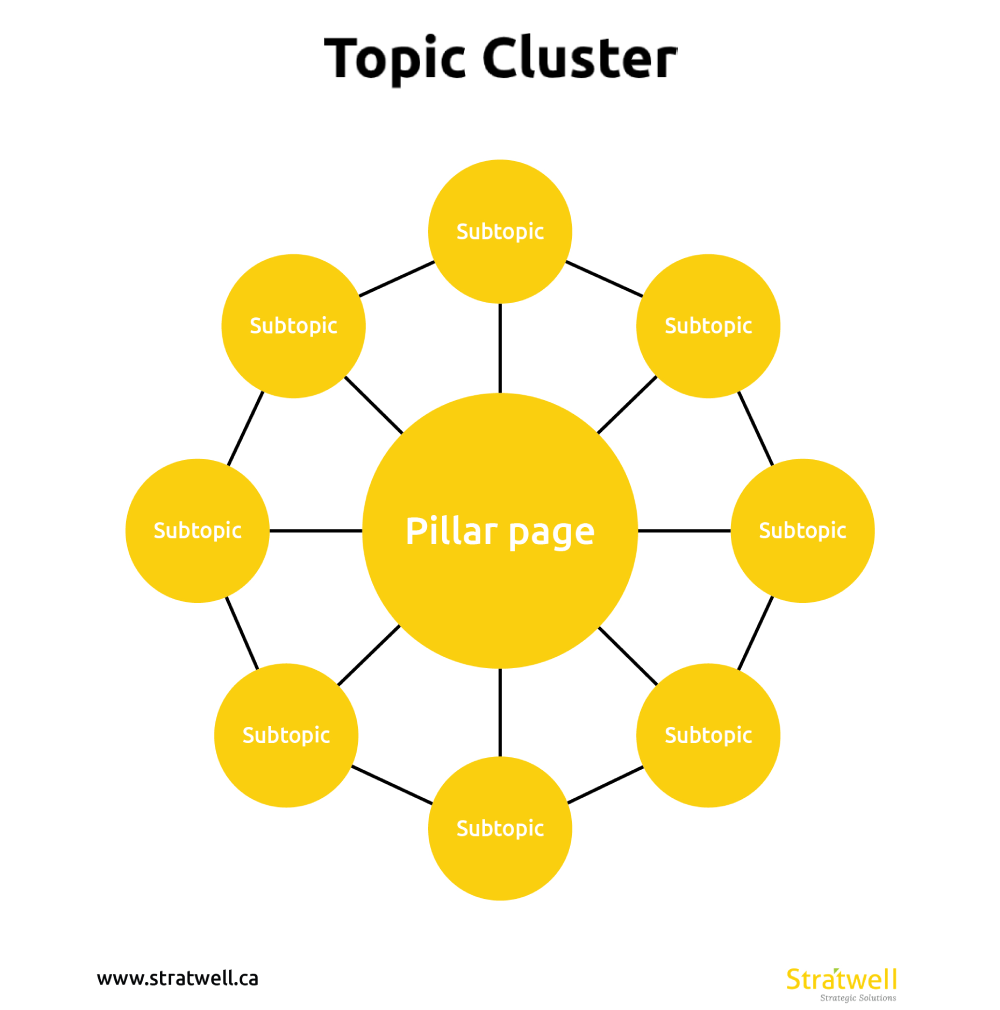
Step 6 – Content Mapping
Content mapping is a technique used to create content that meets the needs of prospects and customers at different stages in their buyer journey. As HubSpot puts it, the process helps you create personalized content for your audience so you can deliver the right content, to the right people, at the right time.
Proper content mapping requires you to know two things. One is your buyer persona, and the other includes the different stages that people go through from when they identify a problem to when they make a purchase. You should then create content for every persona and phase of the buyer journey.
The question to ask is what is my target audience looking for at each stage of their journey? You should then outline topics that can satisfy those needs.
The point of this is to ensure that for every stage of your target audience’s buyer journey, you have content to guide people. This way, you’ll keep prospects within your sales funnel and increase your chances of converting and retaining them.
If you would like to learn more about how to map your content, check out our blog post here. To learn about how to map out your customer’s journey, check out our link here.
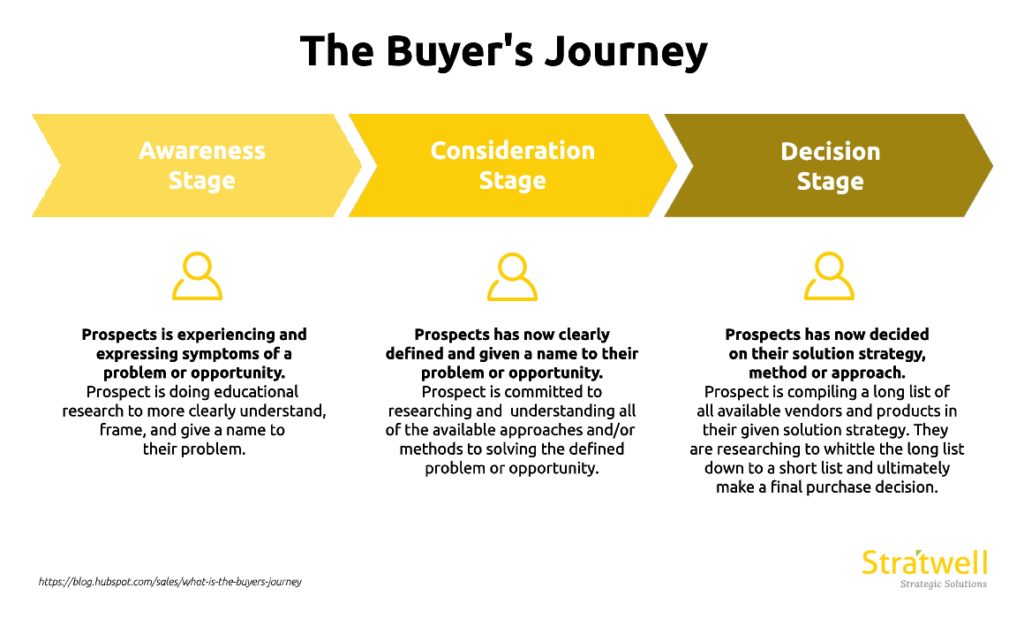
Step 7 – Content Gap Analysis
Content gap analysis is assessing existing content on a topic for holes that you can fill. Such gaps could be thoroughness, simplicity, recency or usability.
It could also mean cross-checking your audience’s needs with existing content to find unanswered questions. The idea is to see how you can improve on what’s already out there so you can provide unique value.
You can conduct a content gap analysis in several ways. One method is to look to your competitors and see what they already have on specific topics.
A simple Google search will reveal all you need to know. Look at the first page results for a particular keyword and assess the quality of the content available on that topic. Then note where you can step in to provide more value.
Another way to do this is to conduct a gap analysis of your content. Scrutinize all the elements of your blog posts and see how to optimize them.
Do you need more visuals? Can you further simplify the concepts? Or is there an aspect of that broad subject you totally left out? Having a solid knowledge of the needs of your audience will help in this process.
Execution Phase
Step 8 and 9 – Creating a Pillar Page and Subtopic Pages
This is the point where you use broad topics you’ve earlier identified to create what is called a pillar page. This page contains highly detailed information about a specific topic.
It’s structured such that visitors can find almost all the basic details regarding a subject on that page. But that’s not all. The pillar page will also act as the focal point for the subtopic blog posts you have created for your broad topic.
It will link to them, and they will link back to it. This ensures visitors can find information on related subjects easily and search engine crawlers can index your pages easily.
The pillar page is also a useful tool for identifying gaps in your topic cluster. If there are any specific subtopics that you have yet to write on, you can give an overview of them on the pillar page and blow them up later into stand-alone blog posts.
And finally, don’t forget to add a table of contents and back to top button for easy navigation.
To learn more about creating pillar pages and topic clusters, check out our blog post here.
Step 10 – Repurposing your Content into a Lead Magnet
A lead magnet is any valuable material you offer prospects in exchange for their contact or to encourage them to take a profitable action.
Putting together a material good enough to serve as an incentive is usually tasking. However, this can be easily achieved by going through your existing content and repurposing it.
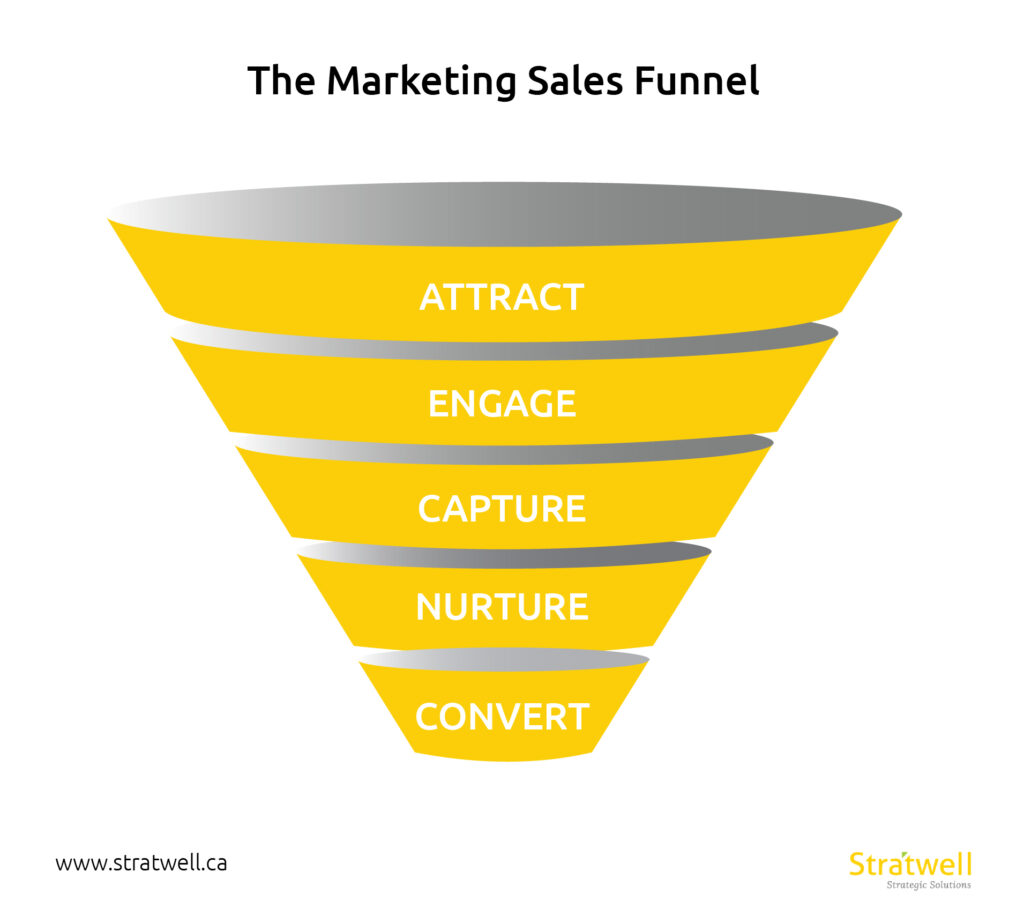 Find one of the major pain points your audience has and build your lead magnet around it. Begin by identifying assets that are on your blog which you can use in creating the material.
Find one of the major pain points your audience has and build your lead magnet around it. Begin by identifying assets that are on your blog which you can use in creating the material.
Then decide what form the lead magnet would take – would it be an eBook, a whitepaper, a video, a report or a checklist? This would mostly be decided by your audience’s preferences and the type of information you want to share.
To maximize the conversion rate, it is important to create lead magnets based on which stage of the digital marketing funnel your buyers are at. To learn more, you may check out our blog post here.
When repurposing your content, you will likely need to do some editing and make the information more suited to the format you have chosen.
Step 11 – Deconstruct and Repurpose your Assets to Strengthen the Pillar Page
Now you can break up the entire set up and see how you can move things around to provide more value on your pillar page. The idea is to keep optimizing this page to make it as attractive as possible to search engine crawlers and users alike. Some examples of how this can be done include having more visuals on the page, fine-tuning your headings and changing your content from text to video format.
Step 12 – Grow your Database
The idea is to begin by ensuring that you direct consistent traffic to your website. To do this, you would also need valuable content and search engine optimization measures.
It is also vital to continue to produce quality content to keep your audience engaged. You might also have to promote your blog on social media.
Once these structures are in place, traffic to your website should increase. As this happens, your lead magnet should be on hand to hook your visitors to grow your database.
Check out our blog post on how to develop a SEO content strategy and drive targeted traffic to your website.
Step 13 – Start the Process Again
Your content strategy is a plan, no doubt. However, as you might have already noticed, some of its parts are dynamic and will require reviews as you go along.
Your first plan will help you begin the journey. Then as you progress, you’ll need to measure results and make adjustments as you deem fit.
One area that could require constant review is the definition of your buyer persona. Having begun by targeting a particular segment of your market with your content, you can expand your reach in two ways.
One method would be to niche down. In this case, say your initial buyer persona was for small businesses in your region. By niching down, you can build a new persona for small marketing firms or small retail stores and look to create custom content for them.
Your second option would be to explore a totally different market segment. From small businesses, you could move to larger ones and create content for them too.
You must not use a one-size-fits-all strategy when trying to extend your content marketing reach. Doing so would only limit your results.
Final Words
Creating an effective content strategy is a rigorous process. At the same time, delving into content marketing without a sound plan will greatly diminish the benefits from your efforts.
Hopefully, this article will give you a foundation on how to develop a solid strategy to ensure that your content marketing will help you to achieve your business objectives.
What are some of the challenges you face when developing a content marketing strategy? Please feel free to share your thoughts in the comment section below.
Enjoy this article? Subscribe to get similar articles delivered to your inbox and don’t forget to share it with your friends.
Other Related Blog Posts:
- How to Use Content Distribution Channels to Amplify Your Digital Marketing Efforts
- How To Create A Buyer Persona In 4 Simple Steps
- How to Complete a Competitive Analysis and Stay Ahead of Competition
- 18 Lead Magnet Ideas To Help You Convert Leads for Every Stage of your Digital Marketing Funnel
- 10 Proven Ways to Drive Targeted Traffic to Your Website
- 7 Simple Steps to Setting Up a SEO Content Marketing Strategy
- Creating Effective Customer Journey Maps: A 4 Step Guide
- Pillar Pages & Topic Clusters: The Next Revolution of SEO
Alan Lo, Managing Partner of Stratwell Strategic Solutions, brings a decade of entrepreneurial and business development experience. Early in his career he was instrumental in building out the distribution channels of a real estate investment firm with over $2 billion in AUM. He has then founded an investment company in 2014 which he successfully exited in 2019.

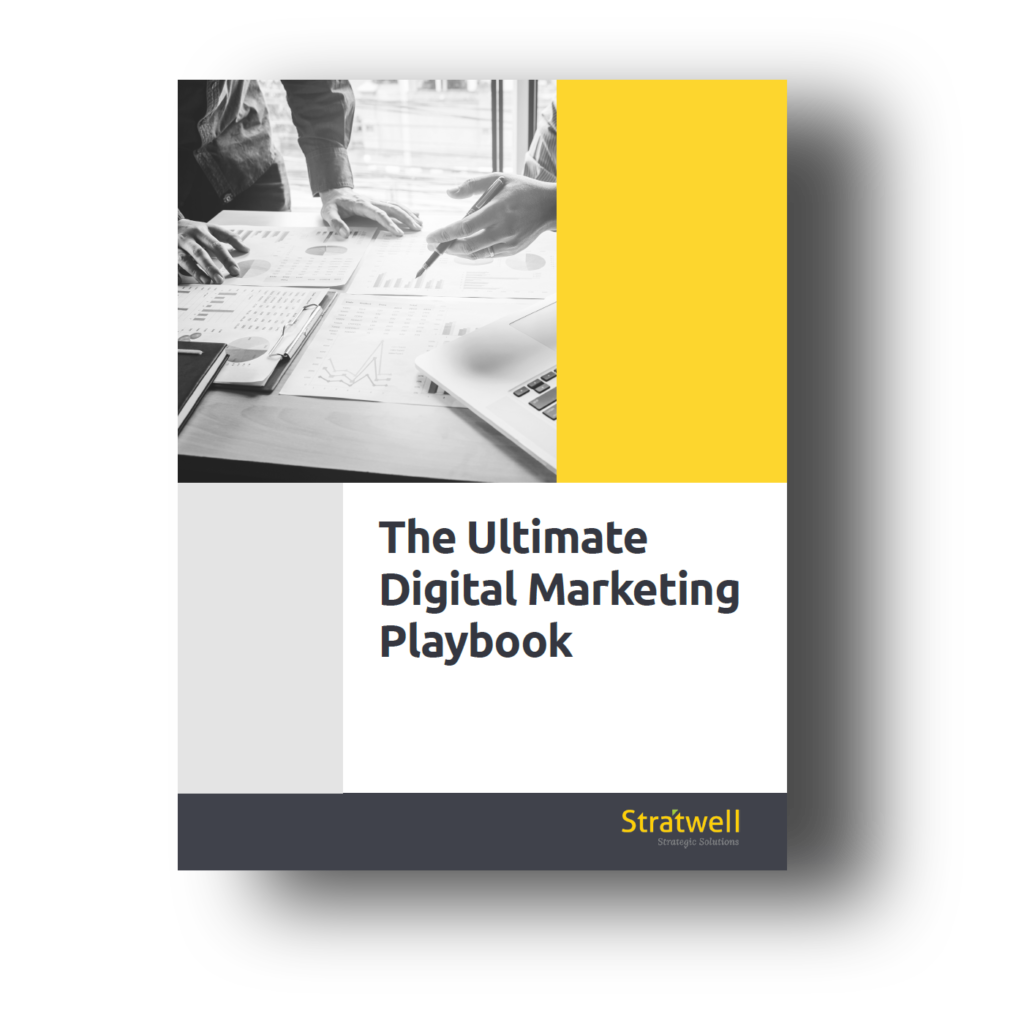

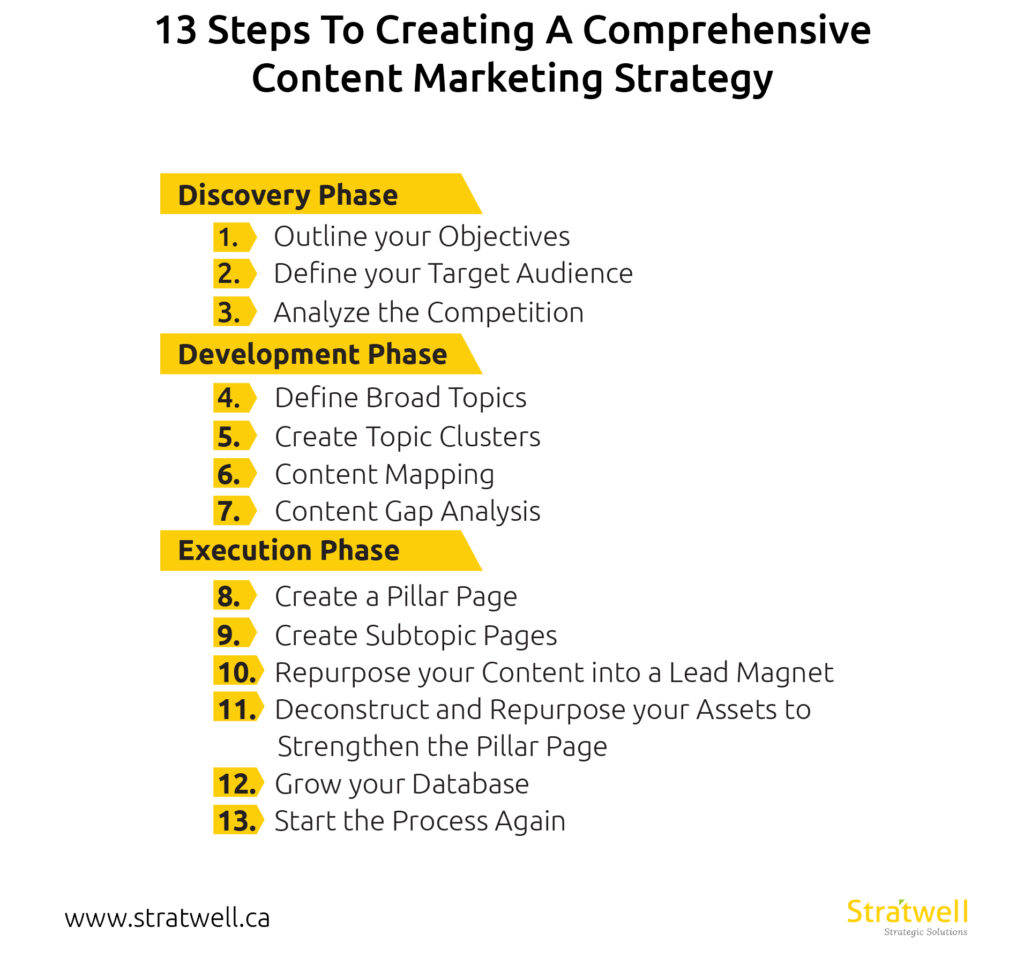








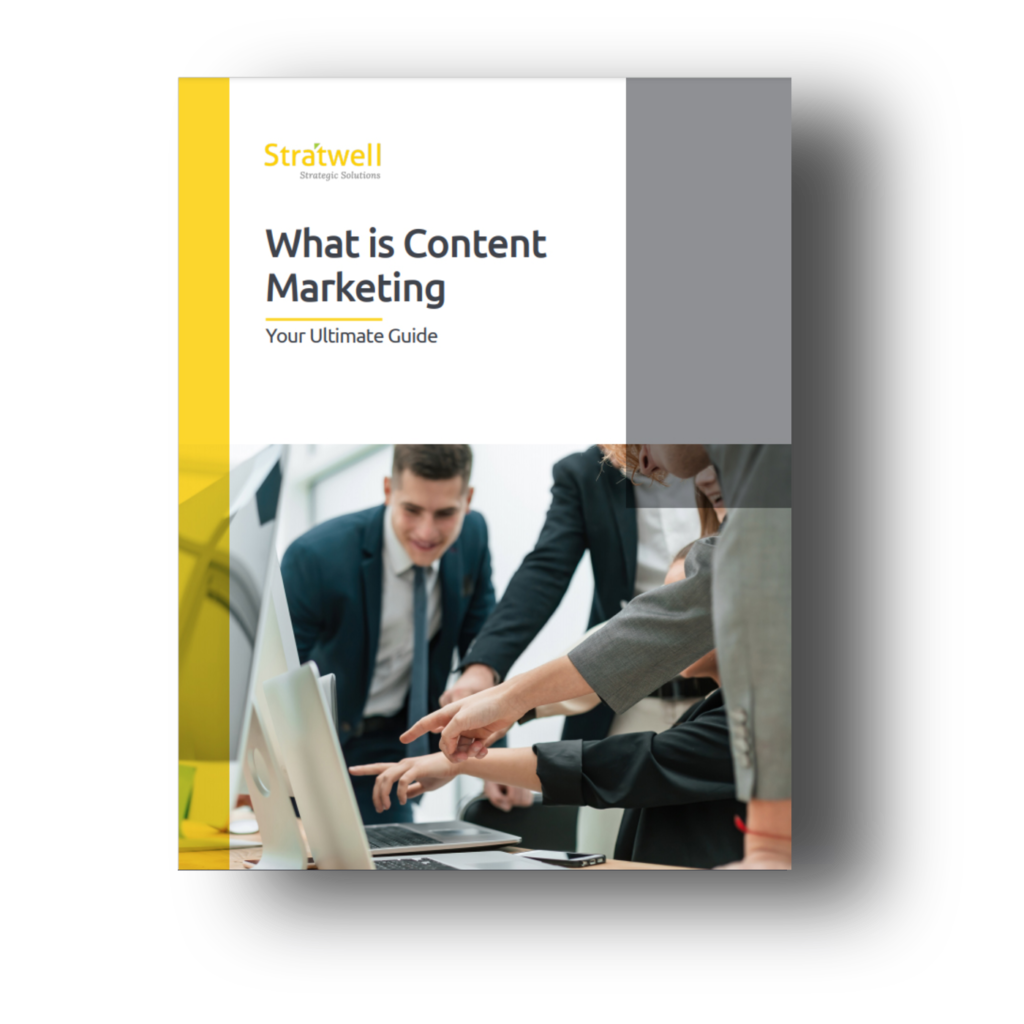
2 Comments
Always enjoy your posts. Keep up the great work!
Thank you Nancee!